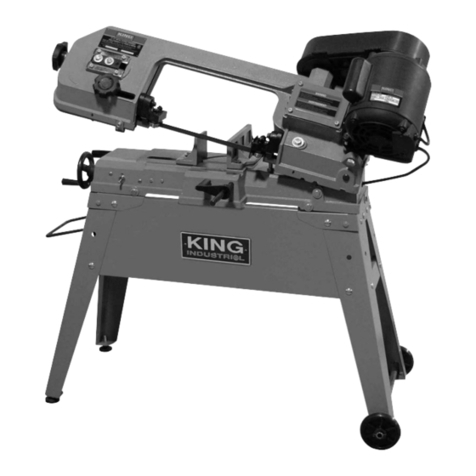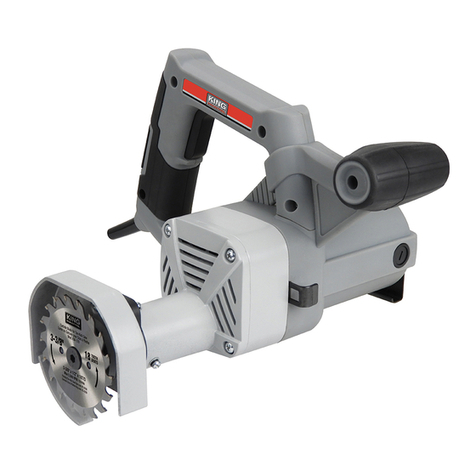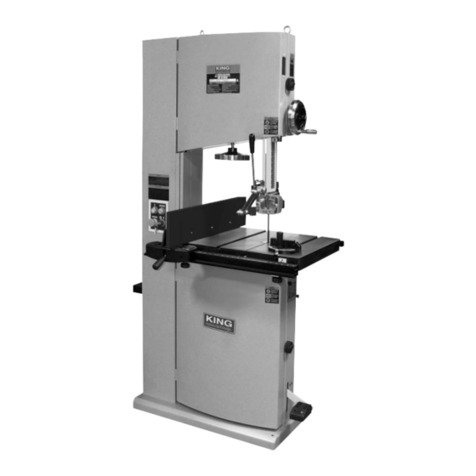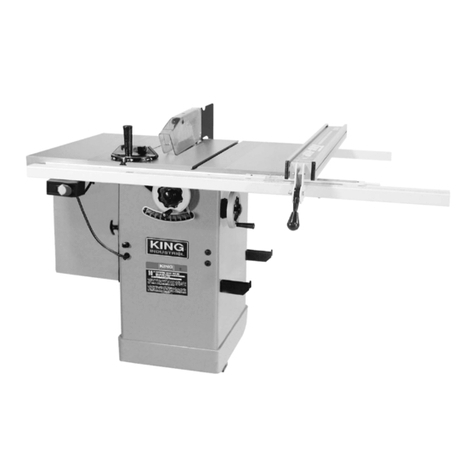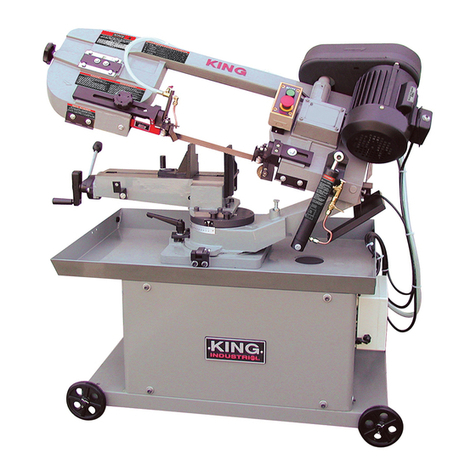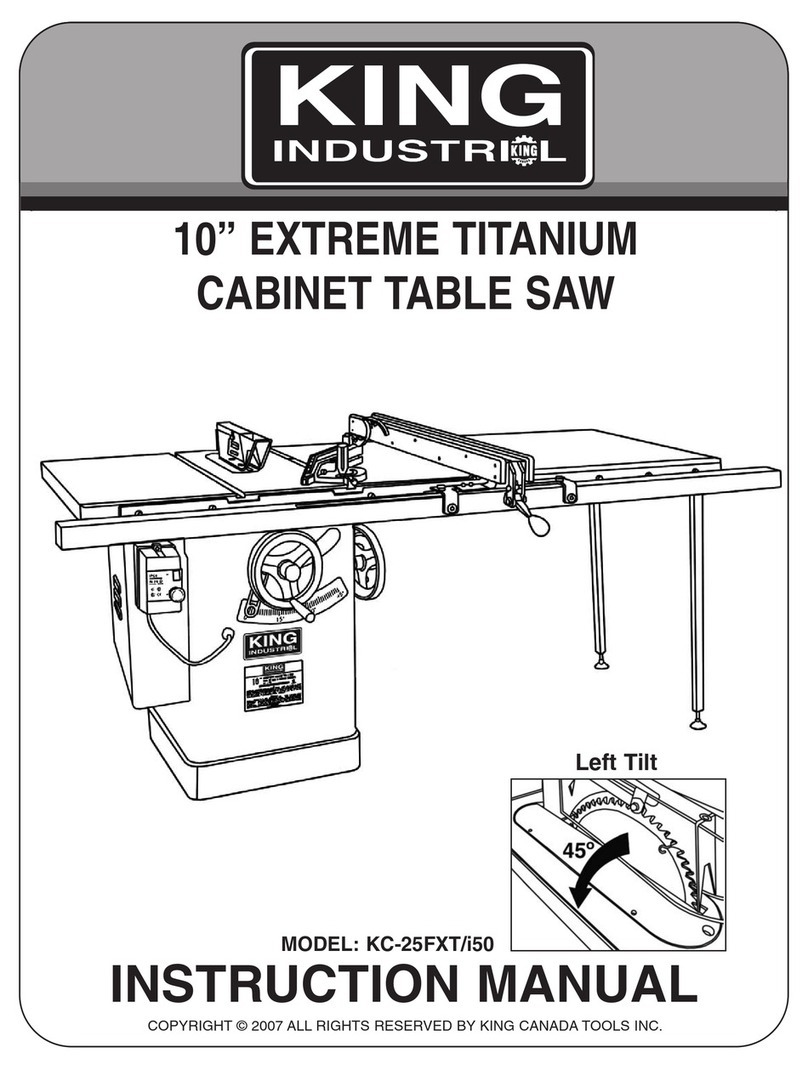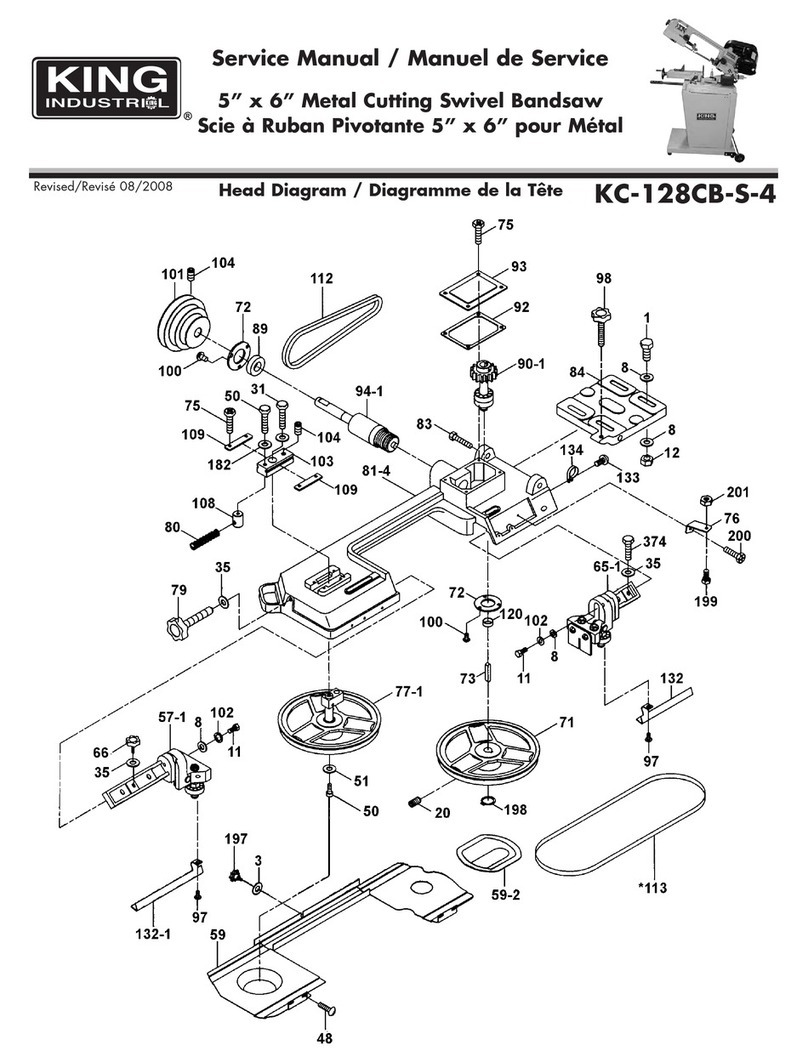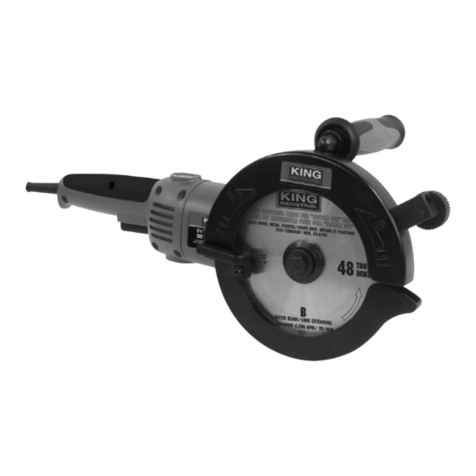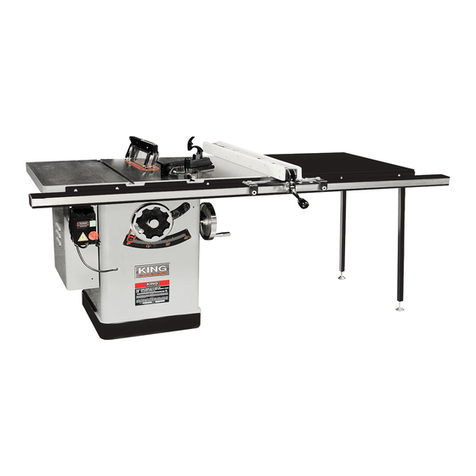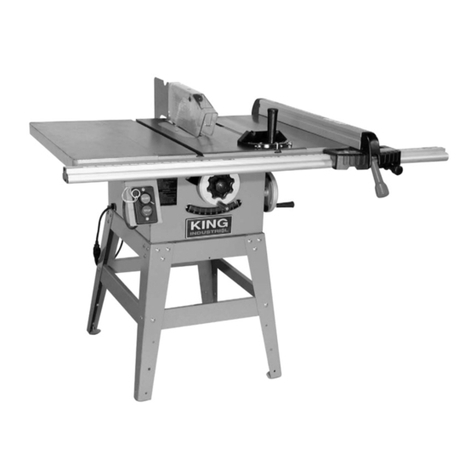GENERAL & SPECIFIC SAFETY
INSTRUCTIONS FOR TABLE SAWS
BEING PREPARED
1) Wear proper apparel. Do not wear loose clothing, gloves, neckties,
rings, bracelets or other jewelry that may get caught in moving parts
of the machine.
2) Wear protective hair covering to contain long hair.
3) Wear safety shoes or boots with anti-slip soles.
4) Wear safety glasses. Everyday eye glasses have only impact
resistant lenses. They are not safety glasses.
5) Wear face mask or dust mask if operation is dusty.
6) Be alert and think clearly at all times. Never operate power tools or
machinery when you are tired, intoxicated or when taking
medications that can cause drowsiness.
BEING PREPARED
1) Keep work area clean. Cluttered work areas invite accidents.
2) Do not use power tools or machinery in dangerous environments.
Do not use in damp or wet locations. Do not expose to rain.
3) Work area should be properly illuminated with lights.
4) Keep visitors at a safe distance from work area.
5) Keep children out of work area. Make workshop childproof. Use
padlocks, master switches or remove switch keys to prevent any
unintentional use.
6) Keep power cords from coming in contact with sharp objects, oil,
grease and hot surfaces.
MAINTAIN TOOL
1) Always unplug from power source prior to inspection.
2) Consult manual for specific maintenance and adjustment
procedures.
3) Keep tool or machine lubricated and clean for safest operation.
4) Remove adjusting tools. Form habit of checking to see that adjusting
tools are removed from the machine before turning tool or machine
on.
5) Keep all parts in working order. Check to determine that the guard
or other parts will operate properly and perform their intended
function.
6) Check for damaged parts. Check for alignment of moving parts,
binding, breakage, mounting and any other condition that may effect
a tool’s operation.
7) A guard or other part that is damaged should be properly repaired or
replaced. Do not perform makeshift repairs (only use parts listed in
this instruction manual to order replacement parts).
8) Maintain proper adjustment of rip fence and blade guard.
9) Never adjust the table saw while it is running. Disconnect power to
avoid accidental start-up.
10) Replace damaged or worn power cords immediately.
11) Keep blade sharp for efficient and safest operation.
KNOW HOW TO USE TABLE SAW
1) Use the right tool for the job. Do not force table saw or attachment
to do a job for which it was not designed..
2) Disconnect table saw when changing blade.
3) Avoid accidental start-up. Make sure the table saw is in the “Off”
position before plugging in, turning on safety disconnect or
activating breakers.
4) Do not force the table saw. It will work most efficiently at the rate for
which it was designed.
5) Keep hands away from blade, moving parts and cutting surfaces.
6) Never leave table saw unattended. Turn the power Off, and do not
leave the table saw until it comes to a complete stop.
7) Do not overreach. Keep proper footing and balance.
8) Never stand on the table saw. Serious injury could occur if the table
saw is tipped or if the blade is accidentally contacted.
9) Know your table saw. Learn the table saw’s operation, application
and specific limitations.
10) Handle workpiece correctly. Press firmly against the table. Protect
hands from possible injury.
11) Turn table saw Off if it jams. Blade will jam when it digs too deeply
into workpiece.
12) Feed workpiece into blade slowly, letting the blade do the work.
Warning: For your own safety, do not operate your saw until it is
completely assembled and installed according to the instructions in this
manual.
STABILITY OF THE TABLE SAW
If there is a tendency for the table saw to tip over or move during
certain cutting operations, such as cutting extremely heavy panels or
long heavy boards, the table saw should be bolted down to the floor or
a secure base. If you attach any kind of table extensions over 24” wide
to either side of the table (in addition to the table extensions included),
make sure you either bolt the table saw to the floor, or support the outer
end of the extension to prevent all chances that the table saw tips over.
LOCATION
The table saw should be positioned so neither the operator nor a
casual observer is forced to stand in line with the saw blade.
KICKBACKS
A kickback occurs during a rip operation when a part or all of the
workpiece is thrown back violently towards the operator. Keep your
face and body to one side of the saw blade, out of line with a possible
kickback. Kickbacks and possible injury from them can usually be
avoided by:
1) Maintain rip fence parallel to the saw blade.
2) Keep saw blade sharp. Replace or sharpen anti-kickback pawls
when points become dull.
3) Keep blade guard, riving knife and anti-kickback pawls in place and
operating properly. The riving knife must be in alignment with the
saw blade and the anti-kickback pawls must stop a kickback once it
has started. Check their action before ripping operation.
4) Do not rip workpiece that is twisted or warped, or does not have a
straight edge to guide along the rip fence.
5) Do not release workpiece until you have pushed it all the way past
the saw blade.
6) Use a push stick for ripping widths less than 6”.
PROTECTION: EYES, HANDS, FACE, BODY, EARS
1) If any part of the table saw is missing, malfunctioning, or has been
damaged or broken (such as the motor switch, electronic controls,
other operating control, a safety device or power cord), cease
operating immediately until the particular part is properly repaired or
replaced.
2) Small loose pieces of wood or other objects that contact the rear of
the revolving saw blade can be thrown back at the operator at
excessive speed. This can usually be avoided by keeping the blade
guard and riving knife in place for all thru-sawing operations (sawing
completely through the workpiece) and by removing all loose pieces
from the table with a long stick of wood immediately after they are
cut off.
3) Use extra caution when the blade guard is removed for resawing,
dadoing, or rabbeting, replace the guard as soon as that operation
is completed.
4) Never turn the table saw On before clearing all tools and wood
scraps from the table.
